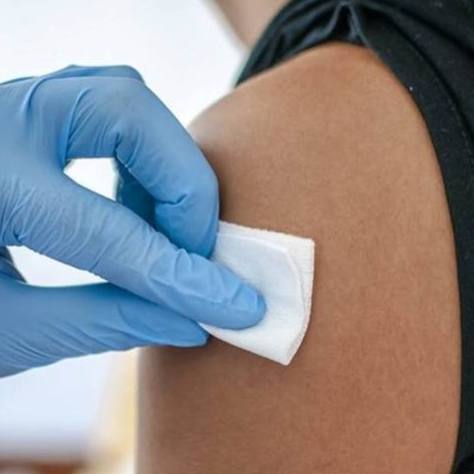-
Infectious Diseases
Sharing Mayo Clinic: New lease on life starts with bilateral hip replacement

What do you do after surviving an extraordinary health crisis? Steve Knutson celebrated his new lease on life with a bilateral hip replacement at Mayo Clinic Health System in Eau Claire, Wisconsin.
Steve's medical journey started on a typical workday in early March 2020. He and seven other colleagues came down with flu-like symptoms and felt ill enough that they headed home.
Halfway to his home in Andover, Minnesota, Steve began sweating profusely, and his vision went to black and white. Knowing something was seriously wrong, he headed to nearby Mercy Hospital. On the way, he called his sister, Kathy Sipple, clinic administrator at Chippewa Valley Eye Clinic in Eau Claire, to let her know something was wrong.
"I thought I could make it to the Emergency Department entrance, but all I could do was make it halfway across the parking lot before sitting down on the back of a pickup truck and hope someone would see me," Steve says. And someone did, rushing him by wheelchair into the Emergency Department.
His oxygen levels plummeted to low levels at first check, increasing slightly after being stabilized in the Emergency Department. The staff thought it might be COVID-19, since the virus was gaining a foothold in the state. But all tests came back negative. Eventually, the diagnosis would be Legionnaires' disease, although no trace of the Legionella bacterium was found in his workplace and none of his other colleagues became so ill.
From those first days, Steve's health became one crisis after another. His lungs, kidneys and other organs were failing. After being put on a ventilator and undergoing dialysis, the decision was made on March 17 to connect him to an extracorporeal membrane oxygenation machine, which would oxygenate his blood outside his body and give his heart and lungs a rest. Throughout his ordeal, he died five times and was brought back each time.
Kathy kept family and friends up to date with Steve's condition through regular CaringBridge posts. It was a roller coaster journey of steps forward and back. Eventually, good days began to outnumber the bad ones.
On April 10, 2020, ― Good Friday ― Steve was removed from the extracorporeal membrane oxygenation machine. On April 24, 2020, his kidneys were fully functioning and lungs that had been turning brown were regaining a healthy pink color.
With his health improving, Steve was transferred May 6, 2020, to Courage Kenny Rehabilitation Institute in Minneapolis.
On Aug. 22, 2020, Kathy wrote, "This will probably be my last entry because Steve has exceeded all our expectations and is doing fabulously. He has no physical limitations, and his mind is as sharp as ever. He's committed to doing whatever it takes to get back to his normal life and beyond. What an amazing recovery."
Steve eventually moved to his parents' home in Menomonie, Wisconsin, to continue his recovery with physical therapy at Mayo Clinic Health System – Red Cedar. He was walking 3 to 4 miles a day, but he realized that his illness and being bedridden for so long had exacerbated the arthritis in his hips.
Steve, who was an avid outdoorsperson and national long-range sharpshooting championship and coach, found that the pain was stalling his full recovery. Steve did not find this outcome to be acceptable.
"My hips were bothering me before my life-threatening illness, and they were worse afterward. The pain was limiting my mobility and keeping me from doing everything I wanted to do," he says. In May, Steve contacted and consulted with Jonathan Webb, M.D., an orthopedic surgeon at Mayo Clinic Health System in Eau Claire, Wisconsin.
"Dr. Webb said I was a good candidate for bilateral hip replacement, which meant I'd only have one surgery and one recovery cycle," Steve says. "I was really impressed with him, and I took his recommendation. The surgery went great, and I had very little discomfort during recovery. In the first week of recovery, I was getting around with the aid of a walker. By the second week, I transitioned to a cane. And by the third week, I was beginning to walk around on my own. I was walking every day with no medications. I did a lot of stretching and walked, walked, walked."
"Steve wanted to get back to his life, so we figured out how we could let him live this new stage of his life with less pain and greater mobility," says Dr. Webb. "Because of the severity of the arthritis, I don't know if he would have recovered as well if we'd done one hip at a time."
Steve, 61, is now back at work, coaching junior sharpshooting teams and attending shooting competitions. "I've got a great life, and I hope I have 50 more years ahead of me thanks to Dr. Webb and his staff."
This story also appears on the Mayo Clinic Health System Hometown Health blog. You can find it there and share it with others https://www.mayoclinichealthsystem.org/hometown-health/patient-stories
Related Articles







